How do crowns on teeth
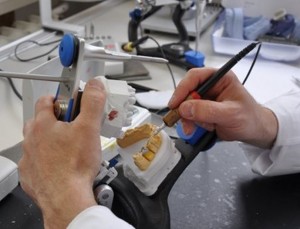
Dental restoration with crowns is the most famous and popular way.
Usually, damaged teeth that cannot be restored are covered with crowns. As a rule, tooth decay occurs as a result of their injury, after root canal treatment, with advanced caries.
These are cases when restoring a tooth with a filling becomes unreasonable. This is especially true for dead depulped teeth.
Since a tooth without pulp loses its nutrition, its walls become brittle and can crack if the restoration method is not correct. Therefore, the most rational method of restoration will be the installation of crowns.
Manufacturing steps
Initial inspection
- During the initial examination of the patient, the dentist, focusing on the clinical situation and x-ray data, should offer the patient the most suitable options for dental crowns.
- A treatment plan for the patient is drawn up, which includes the preparation of the oral cavity for prosthetics, the coordination of the type of crowns to be installed, the number of supporting teeth required for the bridge is specified.
- The estimated cost of treatment and manufacturing of structures is calculated, and the terms of prosthetics are also specified.
Depulpation
At this stage, the doctor performs the sanitation of the oral cavity, treatment of diseased teeth, and seals the root canals.
If the tooth is single-rooted, then it is depulpated in order to avoid overheating of the pulp and subsequent development of pulp during turning.
In the presence of caries, pulpitis or periodontitis, there is a need for their treatment before prosthetics.
When depulping is carried out:
- Nerve removal.
- Processing and expansion of root canals.
- Canal filling.
With severe destruction of the crown of the tooth before performing prosthetics, it is necessary to restore it.
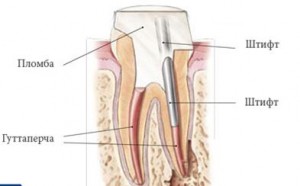
It is possible to restore a heavily destroyed crown using a pin or a stump tab.
Both methods are used for severe tooth decay.
The application of the stump tab has advantages such as strength, reliability and a longer service life.
In the absence of indications for depulpation, crowns are installed on live teeth. This option is more preferable, since the life of the tooth increases.
Teeth turning (preparation)
The dentist gives the tooth a special shape using a set of diamond burs.
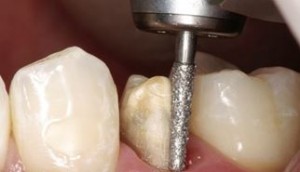
- If live teeth are sharpened, the preparation process is quite painful. Therefore, it is performed under local anesthesia. When turning a dead tooth, anesthesia may be required, if necessary, for example, to move the gum away from the tooth, etc.
- Depending on the type of crown, up to 2.5 mm of hard tissue is sanded from the tooth.If cast crowns are installed, less tissue is removed than for fixing cermets.
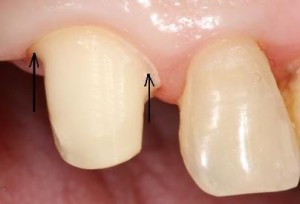
Photo: Properly prepared tooth - When turning, two points are important: the presence of a clear and even ledge near the gums, as well as the shape of the tooth and the inclination of its walls. These parameters have a great influence on the quality and life of the crown.
- The shape of the stump after preparation should be in the form of a full tooth. It is necessary for the modeled crown to be functional and beautiful. As a result, a design should be convenient for chewing food.
The correct form of the stump is the guarantee that there will be no depressurization of the crown. As a result, the crown will serve for a long time and will not fall out.
Dental crown manufacturing
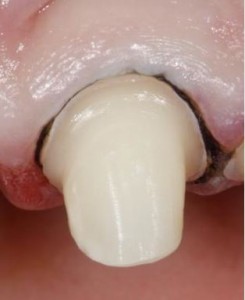
- Impressions are taken from the prepared teeth using the impression mass. The impression process is as follows: a special thread is laid between the gum and the tooth. The surface of the tooth is thoroughly dried. The impression mass is placed on the teeth with a special spoon for two to three minutes until it hardens. With a little effort after solidification, the spoon is removed. The result is an accurate imprint of the tooth.
- Subsequently, on the basis of the impressions obtained in the laboratory, the dental technician creates an exact copy of the teeth from gypsum. The resulting copy of the gypsum model very accurately displays the patient's teeth. The crown is made on such a model.
- Based on the obtained plaster model, the dental technician makes crowns. They can be made of various materials. While a crown is placed on the tooth, a temporary denture can be installed on the patient, which protects the turned tooth from the aggressive environment in the oral cavity and replenishes the aesthetics.
Fitting and fixing
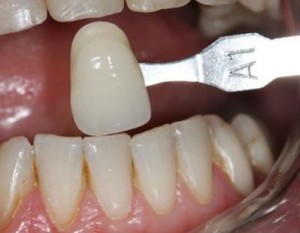
- Before the work on the manufacture of a permanent crown is completed, its color is determined and a fitting is carried out.
- It will allow you to evaluate how well the metal frame is cast, for example, in the manufacture of cermets.
- During the fitting, the accuracy and density of its fit on the turned teeth is also checked.
If there are no comments, then the finished frame is lined with ceramics.
Temporary fixation
After the crown is completely ready for fixation, it is fixed with temporary cement. Such a measure allows us to evaluate how the tooth will behave, whether there is a violation of the closure of the structure with antagonist teeth, etc.
The difference between temporary fixation and permanent fixation is that temporary cement allows you to remove crowns without damaging the tooth and the structure itself. When installing the crown on permanent cement, it will be impossible to remove it without sawing.
- Ideally, the surface of the tooth should be rough, this will improve its adhesion to cement.
- Before final cementing, the crown must be checked for bite.
- The design should not interfere with the closing of the teeth. If defects are detected, the crown is corrected.
Permanent fix
- If within two weeks the patient makes no complaints and feels comfortable, the crowns are removed, the temporary cement is removed and the structure is fixed to the tooth using permanent cement.
- After the structure is glued, even before it has completely hardened, the dentist must carefully remove excess cement around the gums and interdental spaces. If this is not done immediately, then it will be difficult to remove the cement later, it will irritate the gum and may cause inflammation.
You can use the new prosthesis in just one and a half hours.
Video: “Preparation with a ledge for a ceramic crown”
How do crowns on teeth
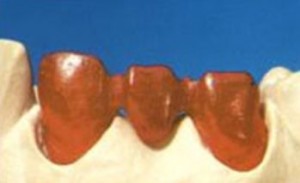
After the impressions from the teeth have been taken, the dental technician takes over the case, who will make the dental crowns from the casts.
Dental crown manufacturing technology boils down to the following:
- A gypsum model of the teeth is cast on the print.
- From a wax on a turned tooth, the frame of the future design is modeled.
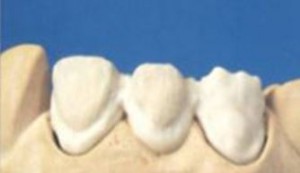
Photo: Ceramic applied to the frame - Remelting the wax frame into ceramic or metal.
- Layered application of ceramic mass on the frame, which has the appearance of sour cream.
- Roasting in a special oven ceramic mass.
- Modeling the shape and color of the crown.
- Processing and fitting of the structure.
Production time
On average, the production of crowns takes from 5-7 days to a month.
The term for the manufacture of the prosthesis is individual and depends on what the crowns are made of and how they are fixed (on the implant, pin, natural tooth).
The manufacturing time of the dental bridge depends on the number and type of crowns and takes from ten days or more.